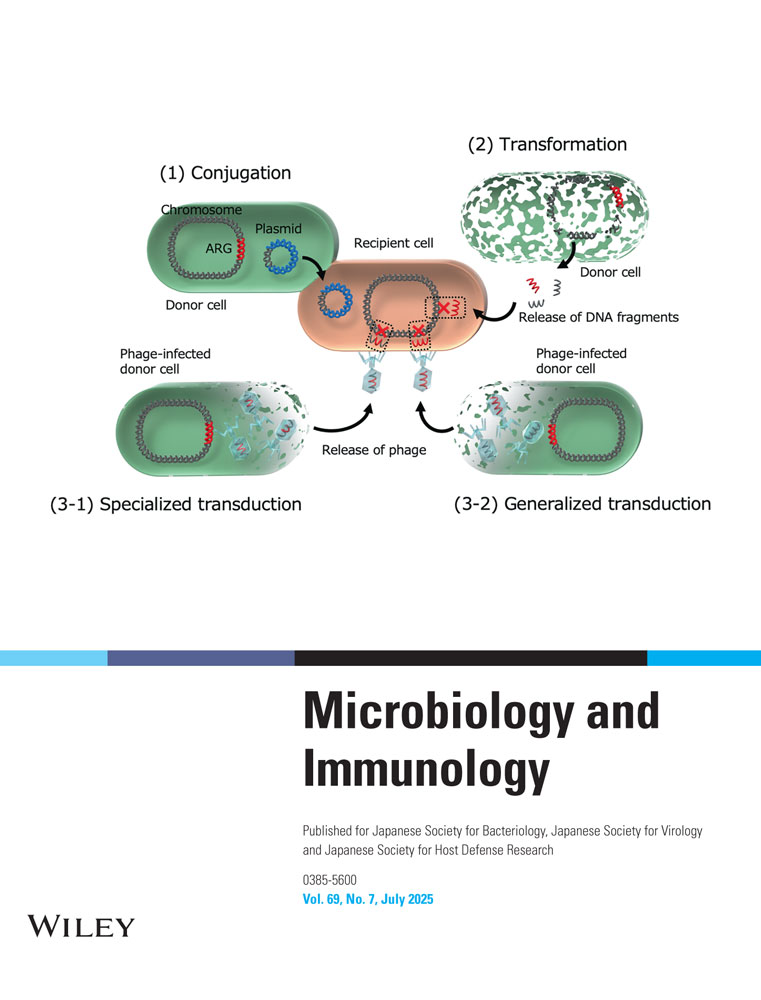Detection and Genetical Characterization of Shiga Toxin-Producing Escherichia coli from Wild Deer
Abstract
Shiga toxin (Stx)-producing Escherichia coli (STEC) strains isolated from wild deer in Japan were examined. A total of 43 fecal samples were collected 4 times from 4 different sites around Obihiro City, Hokkaido, Japan, in June and July 1997. Seven STEC strains were isolated by PCR screening, all of them were confirmed by ELISA and Vero cell cytotoxicity assay to be producing only active Stx type 2 (Stx2). Moreover, they seemed to carry the hemolysin and eaeA genes of STEC O157:H7, and some isolates harbored large plasmids which were similar to the 90-kilobase virulence plasmid of STEC O157:H7. Based on their plasmid profiles, antibiotic resistance patterns, PCR-based DNA fingerprinting data obtained by using random amplified polymorphic DNA (RAPD) and the stx2 gene sequences, all isolates were divergent from each other except for 3 isolates from the first and second samplings. A DNA sequence analysis of representative isolates revealed that deer originating STEC strains were closely related to each other, but not to the Stx2-producing STEC strains isolated from a mass outbreak in Obihiro at the same time. A phylogenic analysis of the deduced Stx2 amino acid sequences demonstrated that three distinct clusters existed in the deer originating STEC strains and that the Stx of deer originating STEC was closely associated with that originating from humans, but not those of STEC originating from other animals. These results suggest that STEC contamination of deer carcasses should be considered as a potential source of human infection and adequate sanitary inspection of meat for human consumption is also essential for wild animals.
Abbreviations
-
- BHI
-
- brain heart infusion
-
- bp
-
- base-pair
-
- EHEC
-
- enterohemorrhagic Escherichia coli
-
- RAPD
-
- random amplified polymorphic DNA
-
- SMC
-
- Sorbitol MacConkey agar
-
- STEC
-
- Shiga toxin-producing enterohemorrhagic Escherichia coli
-
- Stx
-
- Shiga toxin
-
- TSB
-
- trypticase soy broth




